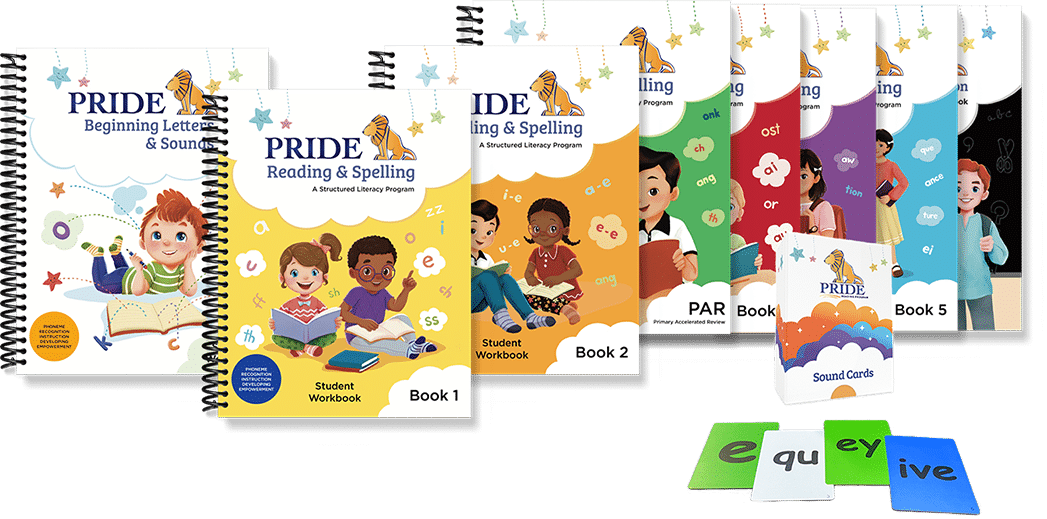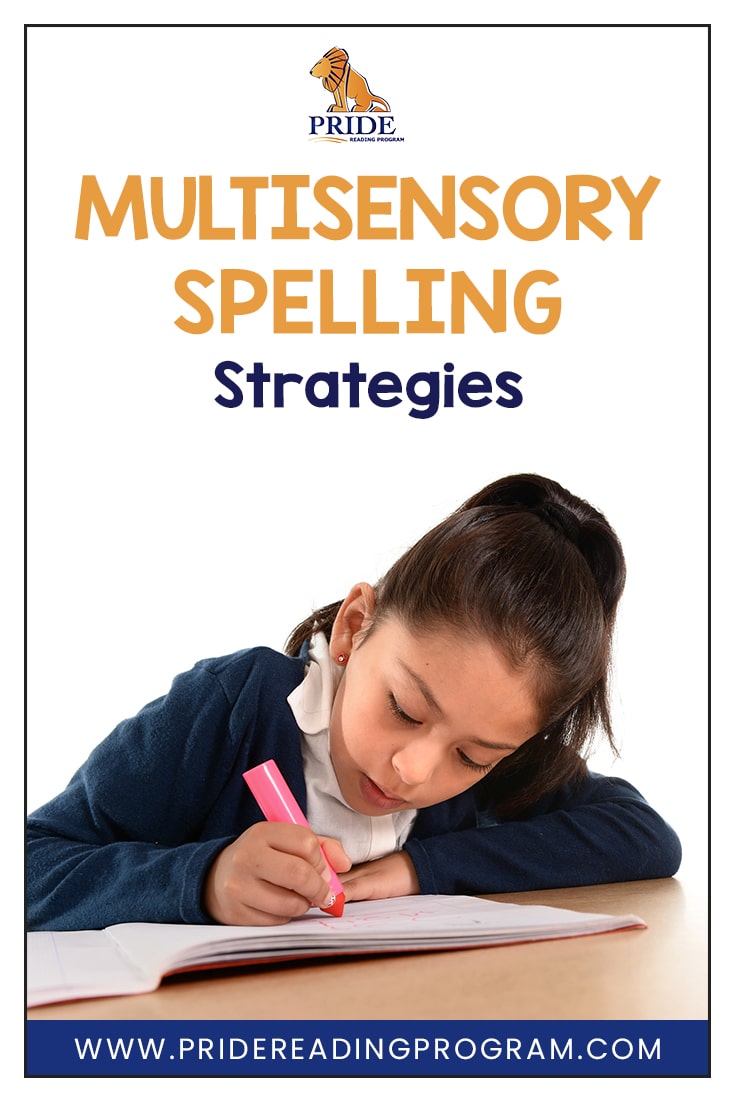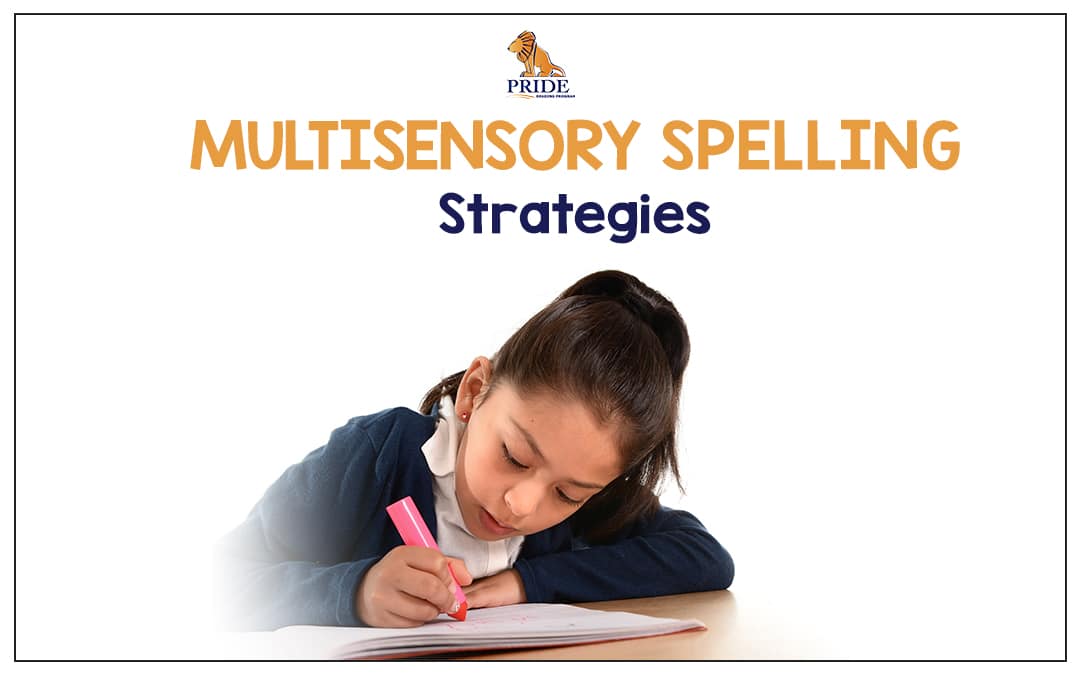Multisensory Spelling Strategies that are Fun and Effective!
Studies from the National Institutes of Child Health and Human Development have shown that for children with difficulties learning to spell, a multisensory teaching method is an effective way for these students to learn. Multisensory teaching means the teacher must tap into all learning modalities – see it (visual), feel it (tactile), hear it (auditory), and move with it (kinesthetic). Here are a few suggestions on how to make spelling lessons fun, creative, and engaging with these multisensory spelling strategies.
1. Break Up Words into Chunks and Syllables!
The ability to recognize patterns in language is essential for spelling success. By developing strong phonological awareness, children will have the tools they need to spell difficult words quickly and accurately. This helps them become more confident spellers who can focus on writing content instead of struggling with spelling individual words.
Phoneme awareness develops first in young children as they learn how language works by listening closely when adults talk around them. As children become more familiar with language patterns, their understanding of syllables, rhymes, and sentence structure will also grow.
Finally, when children begin learning about letters and their corresponding sounds (phonics), this knowledge will help them connect spoken language with written text, further improving their reading and spelling abilities.
Watch our favorite teacher, Miss Renee use some multisyllabic word activities to practice spelling and breaking up difficult to read and spell words using multisensory activities.
2. Back Tracing
This spelling game is a fun way to practice spelling words. Students will need to work in pairs for this spelling activity. The teacher will begin by writing a list of words on the whiteboard. One student will spell a word by writing the letters on the other student’s back and the other student has to write the letters on a piece of paper to make the word. By establishing a sense of touch, the students can make the connection between each letter and form memories of these words as they are spelling them out.
3. Magic Carpet!
The teacher will dictate spelling words one at a time. While sitting on a carpet, the student will spell each word directly on the carpet with two fingers. The fuzzy sensation of touching a carpet produces a feeling of comfort which will help your child positively associate spelling with!
4. Learn Spelling with Systematic Phonics
Phonics is the understanding of how letters are used to represent speech sounds (known as the alphabetic principle). It involves matching written letters with their corresponding sound(s) to read unfamiliar words. For example, a child with good phonics skills could spell the word “bat” by recognizing that each letter represents a specific sound. When students know the sounds of the letters that they see in print, they are able to spell these words.
Systematic phonics instruction is a method of teaching students how to connect the graphemes (letters) with phonemes (sounds) using a clear and well-thought-out scope and sequence to teach children how to read and spell. Lessons are built on previously taught information, from simple to complex, with clear, concise student objectives that are driven by ongoing assessment:
- Consonant and short vowel sounds
- Digraphs and blends
- Long vowels and other vowel patterns
- Syllable patterns
- Affixes
Spelling and Reading Programs that are aligned with the Science of Reading and use the Orton-GIllingham approach will include systematic phonics instruction. To learn more check out this FREE course:
5. Jump Rope!
Students will pair up and take turns jumping rope while spelling the words out loud. A list of words will be on the whiteboard. One student will say a word. The jumper will repeat the word, spell it, and put it in a sentence while jumping. Doing a demanding physical activity such as jump rope will not only improve a student’s multi-tasking abilities but also improve their ability to recall from memory faster.
6. Neon Colors!
Using gel pens, the student will draw a picture on a piece of black paper. Then the student will write the spelling words around the perimeter of the picture. This is also called a Spelling Picture. Using the neon gel pens and black paper just makes this spelling activity a bit more exciting, but the student can also create a spelling picture with plain white paper and crayons.
7. Letter Tiles
The student can spell the spelling words using magnetic letters or letter tiles for a great multisensory spelling activity. The letter tiles should be organized in alphabetical order on a desktop. The teacher will dictate a spelling word to the student. The student will repeat the word and then bring down each letter in the word to build the word in front of them.
Here is a Spelling Resource for You!
Thank you for reading this post today on multisensory spelling strategies. You might also enjoy reading my previous posts:
How Children Learn to Read: A Guide for Parents and Teachers
Please don’t leave without checking out the PRIDE Reading Program. The PRIDE Reading Program is an Orton-Gillingham reading and spelling curriculum that is used by teachers, tutors, and homeschooling parents worldwide with great success.



